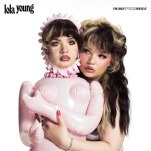The 15 Best Vertigo Miniseries and OGNs of the Last 15 Years
It’s an interesting time to check in with Vertigo. Founded in 1993, the DC Comics splinter spent two decades as the go-to publisher for readers interested in more “literary” fare than what was offered in your standard capes-and-tights soap operas. Largely stewarded by executive editor Karen Berger (who departed the company in 2013), Vertigo’s initial wave consisted of a handful of relabeled DC titles written by influential, primarily-British creators such as Neil Gaiman, Alan Moore, Peter Milligan and Grant Morrison, and soon expanded to include genre-defining original stories such as Preacher, The Invisibles and Transmetropolitan.
In the years since Vertigo’s debut, the line has undergone numerous changes and focus shifts. “Sub-imprints” like Vertigo Crime have come and gone, bestselling writers like Brian K. Vaughan, Jason Aaron and Scott Snyder have launched careers off of Vertigo successes, and the repurposed DC characters that once made up the bulk of the line have been swallowed back into the DCU proper. Many recent Vertigo series have struggled to find sustainable audiences as creator-owned offerings from Image Comics, BOOM! Studios, Oni Press and other publishers have expand, and the imprint’s current longest running series, Fables, is a few short months away from concluding.
![]()
With Grant Morrison, Chris Weston, and Gary Erskine’s 2002 Vertigo miniseries The Filth arriving in a handsome new hardcover edition this week, Paste took the opportunity to look back at the last 15 years of Vertigo successes. With the sheer diversity of the line, we’ve split the list into ongoings and miniseries/OGNs, arranged in chronological order by start date—these books are just too varied to rank. Time will tell what DC’s move to Burbank and the increasingly competitive creator-owned comic field might mean for Vertigo’s future, but its past successes speak for themselves.

The Filth
Writer: Grant Morrison
Artists: Chris Weston, Gary Erskine
Run Dates: August 2002 – October 2003
Picking Grant Morrison’s best work is an impossible task—just look at how many times he appears on this list—but The Filth stands out as one of the purest examples of his reality-bending narrative style. Detailed, realistic art from Chris Weston and Gary Erskine grounds everything at just the right level of sensory overload. Pitched in an earlier form as a Nick Fury story, and serving as the last in a thematic trilogy with Flex Mentallo and The Invisibles, The Filth follows Greg Freely, a sad bachelor trying to get home and take care of his sick cat. Given that it’s Morrison, Freely soon discovers that he’s a secret agent for a sprawling organization intent on maintaining the status quo. Oh, and there’s also a communist primate assassin.![]()

Global Frequency
Writer: Warren Ellis
Artists: Garry Leach, Glenn Fabry, Steve Dillon, Roy Martinez, Jon J. Muth, David Lloyd, Simon Bisley, Lee Bermejo, Tomm Coker, Jason Pearson, Gene Ha
Run Dates: December 2002 – August 2004
Originally published by Wildstorm and collected by Vertigo, Global Frequency is as concise a mission statement for Warren Ellis’ persistent transhumanist anxieties and futurist tech interests as you’re likely to find. Its rotating cast of artists laid the groundwork for Ales Kot’s Zero a few years before Kot could legally buy a drink. Ellis has never been precious about punching out bold concepts and moving on, but it’s clear now that Global Frequency’s network of specialists were called to duty before their time and would be worth revisiting in the post-smartphone, app-heavy modern world. Bonus: the series sported covers by Brian Wood, who would go on to leave a substantial mark on Vertigo as a writer.![]()

The Sandman: Endless Nights
Writer: Neil Gaiman
Artists: Glenn Fabry, Milo Manara, Miguelanxo Prado, Frank Quitely, P. Craig Russell, Bill Sienkiewicz, Barron Storey, and Dave McKean
Release Date: September 2003
Returning to your most celebrated work rarely meets expectations, but Neil Gaiman, joined by some of the greatest talents in comics, crafted a near-perfect set of standalone tales in The Sandman: Endless Nights. With one story per Endless sibling, each told by a different artist, Gaiman found a way to expand his most famous mythos in a meaningful way without compromising the original series ending. It’s likely that The Sandman: Overture, the long-delayed prequel with visionary artist J. H. Williams III, will reach similar heights once finished and read without six-month gaps between issues.![]()

It’s a Bird
Writer: Steven T. Seagle
Artist: Teddy Kristiansen
Release Date: May 2004
-

-

-

-

-

-

-

-

-

-

-

-

-

-

-

-

-

-

-

-

-

-

-

-

-

-

-

-

-

-

-

-

-

-

-

-

-

-

-

-



















































